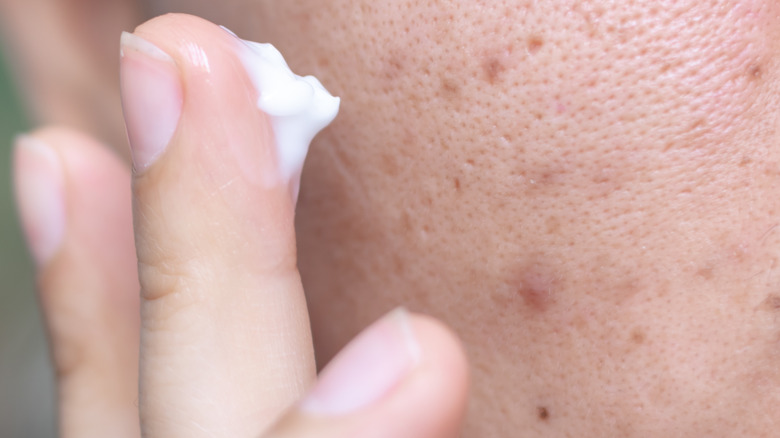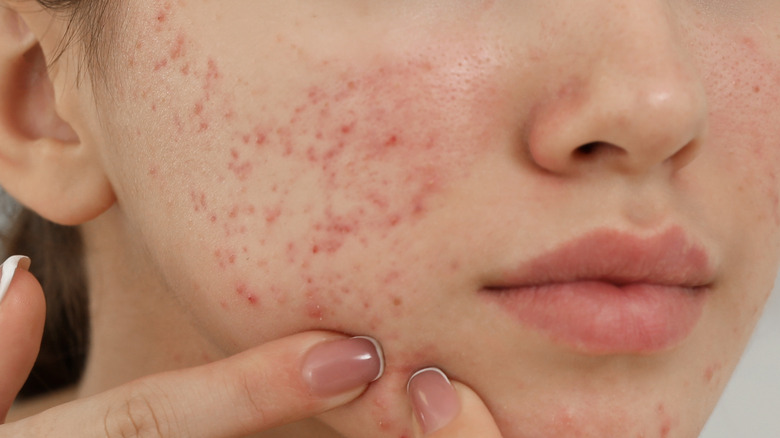The Big Difference Between Whiteheads And Blackheads
Few things can change the tone of a day like a pimple. Finding an unsightly blackhead or whitehead can make you feel like you're suddenly under a spotlight. However, that perception is often blown out of proportion. Most people don't register the appearance of the people around them, and even fewer are likely to notice something like another person's acne.
This might sound like wishful thinking, but there are dozens of studies on it, so many that the phenomenon even has its own name. It is called The Spotlight Effect, and Psychology Today explains it as the feeling that everyone is looking at us when really most people are too caught up in their own day to pay much attention. Of course, knowing this doesn't automatically erase the pressure we feel when our acne acts up, or the fear we have when it's time to venture outside with a blemish.
The best way to handle that fear is to treat the pimple properly, but before you can do that, you have to know what type of blemish you have. Chances are it is one of two things: a whitehead or a blackhead. While it might seem like the color of the blemish is the only difference, there is more going on than meets the eye. As Healthline explains, the treatment you need will be dependent on the differences between the two.
It's all about air
The first thing Healthline advises is to avoid touching your face. You may be tempted to pop your whitehead or squeeze out a blackhead. However, both contain bacteria that can lead to further breakouts across your face. Instead, try washing your face and using products to reduce the blemish without picking at it.
Before buying a product, however, Healthline notes that you need to know the specifics of what you're dealing with. Both types of blemishes are the result of something called a comedone, which is an open or closed skin pore or hair follicle clogged with oil, dead skin cells, and bacteria. Blackheads are known as open comedones because they are exposed to air. Whiteheads, in contrast, are closed comedones, which means the bacteria inside are not exposed to air. It is this air exposure that gives the blemish its color. In blackheads, the air oxidizes melanin, turning its sebum black. The sebum and bacteria in a whitehead are covered and not exposed to air, leaving it white.
Sebum is an oil that mixes with fat cells to moisturize and protect your skin, according to Medical News Today. While sebum might sound bad, it's actually helpful when it doesn't clog a pore and mix with bacteria. When there's too much sebum, however, pimples form. The type of pimple you have just comes down to air exposure. However, knowing what you have is critical to treating it properly.


